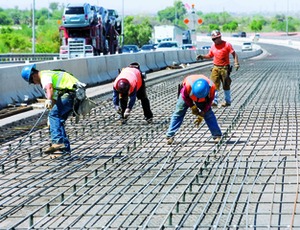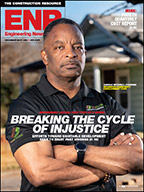
Nationwide, craft labor continues to see few wage increases during the downturn, but experts say that trend may be reversing. After years of historically low hikes, surveys of union and non-union wage rates suggest they are again heading back up.
Merit-shop labor should see wages rise by 2.06% on average this year, up from a 1.68% increase in 2010, according to the 2011 wage-and-benefit survey by Personnel Administration Services (PAS), Saline, Mich. “It looks [as if] 2010 was the bottom, and now [wage rates] are heading upward again,” says Jeff Robinson, president of PAS. The uptick marks the first wage hike for merit-shop craft labor since 2007, when increases reached over 5%.
Data on wage freezes is even more telling, Robinson says. This year, 25% of merit shops estimate they will freeze wages, compared to 33% last year. Only 13% of merit shops in Arizona, California, Hawaii and Nevada, collectively, plan wage freezes. “That is a good sign that things are changing,” he adds.
Robinson says that while construction unemployment is high—at 13.5% nationwide—employers want to keep the existing workforce happy. “If employees go too long without an increase, they start to push back,” he says, adding that small to midsize firms with a stable workforce are most vulnerable. Such increases come as the cost of living is creeping up. In 2010, the consumer price index rose 1.5%, according to the U.S. Dept. of Labor. So far this year, the index has risen 3.8% in August compared to a year ago in 2010.
Union craft labor also is seeing a slight bump in its paychecks. Through the end of August, first-year wage-and-benefit settlements reported to the Construction Labor Research Council, Washington, D.C., averaged 79¢, or 1.6%. The figures mark an uptick from 2010, when hikes averaged 64¢, or 1.3%, in the same period. The lowest average regional increase this year is 0.5% in the south-central states, while the four-state Southwest sector averaged the highest at 2.8%.
Although markets are trending up so far this year, Carey Peters, CLRC executive director, hesitates to call it a rebound. “It's a slight upswing so far, but there are more settlements to come this year,” he says. “In this economy, it's hard to say what could happen.”
As with merit-shop crafts, unions have seen a big squeeze on wages and benefits. During the same period in 2008, first-year contract hikes averaged $2.08, or 4.6%, marking a more than 60% drop from three years ago to today. About 18% of settlements this year offered no increase, compared to 10% in 2009, Peters adds. With more settlements at flat rates, labor is hesitant to agree to terms longer than one year. More than half of 2011 pacts have been for one year, says CLRC. The increased number of pacts with no hikes as well as one-year terms are key trends for 2011, says Jeannene Murphy, statistician at RS Means, Norwell, Mass.
Still, several multiyear agreements are being signed. This summer, New York City unions and employer groups inked multiyear deals that hiked wages while cutting costs through overtime structures and work rules. Contractor groups sought double-digit cost cuts by targeting productivity, instead of aiming at paychecks.
Operating engineers' union Locals 14 and 15 in New York City signed three-year pacts that offer 3% hikes each year, except for operators of exterior or interior hoists, who received a wage freeze. Use of highly paid tradespeople, such as master mechanics and maintenance engineers, were also severely limited. Overtime rates were adjusted, creating a projected double-digit savings.
Union painters signed a deal with a one-year wage freeze and 1.9% weighted average increase over a four-year period. Recalculated overtime could generate another 20% savings. Work-rule changes played heavily into the deal, including flexible start times, elimination of the hiring hall, free use of tools, no restrictions on the work apprentices can perform, security background checks and employer-paid random drug and alcohol testing.



Post a comment to this article
Report Abusive Comment